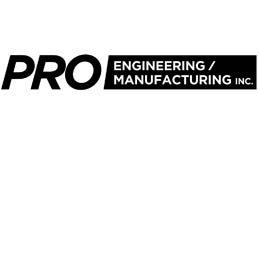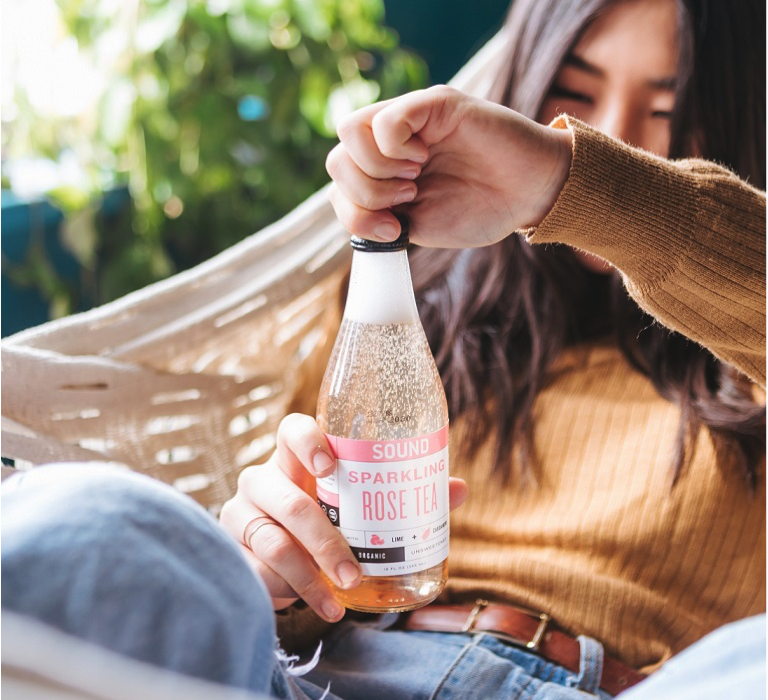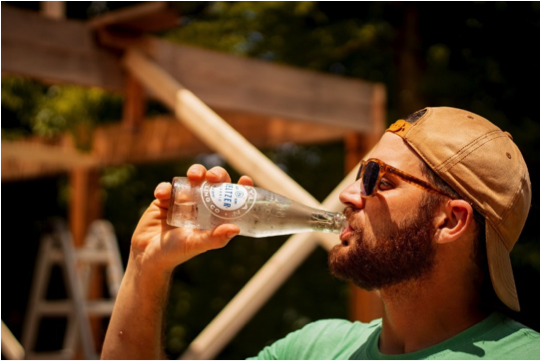How to Tunnel Pasteurize Seltzer Water and Other Carbonated Beverages?
You may be wondering how tunnel pasteurization works when making a carbonated beverage, such as seltzer water and other types of carbonated water. This process is an excellent method because it keeps the product at the correct temperature and prevents microbes from becoming overheated. It also ensures the highest quality product and retains its great flavor.
What is Tunnel Pasteurization?
Tunnel pasteurization is a method of sterilizing a product by heating it to a high temperature and cooling it to an extremely low temperature. This process seals in the nutrients in the product and produces top-quality items in a short period. Pasteurization in tunnels is a common method of sterilization used in the pharmaceutical industry and beverage industry, but it is also applicable to many other service procedures. Let us discuss some of these examples.
Energy drinks, for example, can have their shelf lives extended with pasteurization. A tunnel pasteurization process preserves carbonated beverages and extends their shelf life more effectively than other methods. Unlike a hot filling, this process allows the product to retain a certain amount of CO2, preventing foaming. While this method has limitations, it is safe for many products.
The tunnel pasteurization process has several advantages. Tunnel pasteurization can help prevent the formation of harmful microbes, which are essential for canned beer. It exchanges carbon dioxide in the beer into carbonic acid, which helps break down the proteins that cause foam in the beverage. The resulting carbonic acid eliminates the need for emulsifiers. Tunnel pasteurization is also effective for sterilizing high-acidifying drinks and bottled water.
The Tunnel Pasteurization Process
Tunnel pasteurization is unlike other pasteurization processes. Rather than striving for a single temperature shock, it gradually processes products from one end of the system to the other.
One end of the tunnel carries the bottled or canned goods, and the temperature steadily increases with sprays of hot water. The temperature gradually rises in stages. It is brought to a target temperature and kept there long enough to kill specific microorganisms in each stage. After that, the material proceeds to the next stage, where the temperature rises a bit higher, held in place until it reaches the maximum desired temperature.
After reaching the desired temperature, the product gradually cools down to room temperature. It is all about gradual temperature changes rather than bringing products to their maximum temperatures at once.
Labeling, boxing, and palletizing can begin once the product has cooled to room temperature.
Are Fermentation and Pasteurization the Same Thing?
Fermentation is a process that creates beneficial microorganisms in foods. Some of the benefits of lacto-fermented foods include increased heart health and immune system strength and anti- inflammatory, anti-cancer, and anti-obesity properties. Fermented foods generally taste great and are easily incorporated into a daily diet. These foods range from refreshing drinks to snacks to side dishes.
Fermentation and pasteurization are two different processes used to preserve foods and beverages. Both processes are performed on microorganisms to break down sugars to produce alcohol and acetic acid. The fermentation process creates carbon dioxide as it takes place. Pasteur was initially working on vaccinations to cure chicken cholera, a disease that could infect an entire farm in 3 days. Pasteur and his colleagues injected cholera microbes into test chickens in one experiment. They observed that cholera-infected chickens died off after being exposed to weaker microorganisms.
Pasteurization kills bacteria in non-pasteurized liquids and foods. This process takes its name after Louis Pasteur, who discovered in the 1860s that heating beverages to 57 deg C (154°F) prevented abnormal fermentation. Pasteurization of milk has become widespread, with temperatures as low as 63 degrees Celsius for 30 minutes or 72 degrees Fahrenheit for 15 seconds. Higher temperatures are also possible, but they take longer.
Can You Pasteurize Carbonated Water?
Beverage brands use thermal distillation and carbonation methods to preserve their drink products. However, a growing consumer base demands non-carbonated drinks with more unstable ingredients. The production facility of carbonated beverages is turning to pasteurization to reduce the dissipation of their products and maintain their shelf life. Tunnel pasteurization is particularly useful in carbonated beverages that contain high amounts of sugar.
Tunnel pasteurization requires a certain temperature range to ensure that your product is safe for consumption. Tunnel pasteurizers use high-pressure steam or electricity to sterilize carbonated drinks in glass bottles and cans. The temperatures and time requirements for the process must match the flow of the beverage production line. Tunnel pasteurizers are used for various carbonated beverages, from water to wine, and can even sterilize tinned beer.
You can make various high-quality items in minutes through tunnel pasteurization, including sodas and packaged beverages from supermarkets. Tunnel pasteurization maintains flavor and structure while protecting against contamination better than flash pasteurization.
How Do You Pasteurize Carbonated Juice?
Tunnel pasteurization is a process used to sterilize carbonated drinks. Its purpose is to keep the product above the freezing point to protect the organisms from excessive heat. It also helps reduce the production of chloroform gas during canning and storage processes. The results of tunnel pasteurization are highly beneficial for the consumer, as it ensures that the product is fresh.
The process of pasteurization is very effective in preserving the quality of carbonated drinks, which means that they will be available for a long time. In addition, this method is completely safe, as the CO2 level will be sufficiently high to protect the juice and prevent microbial growth. As a result, it can preserve many drinks, including seltzer water and other carbonated drinks.
To achieve the right temperature for pasteurization, you must first determine the desired carbonation level. From there, you can figure out how many units are needed. One pasteurization unit is the equivalent of one minute of micro-death at 60 degrees Celsius. Once you know how many pasteurization units you need, you can calculate the time in minutes. In addition to the temperature level, pasteurization can improve the taste and texture of carbonated beverages.
Is Carbonation a Preservative?
It is more effective to gradually change the temperature of seltzer water, soda pop, and other artificial flavors rather than heating them very quickly. The process is compatible with most carbonated beverages because it does not use too much CO2 and results in too much foaming. Tunnel pasteurization has become an increasingly common way to sterilize carbonated drinks in recent years.
Despite using conventional carbonation and thermal purification to sterilize beverage products, the trend toward non-carbonated beverages and more predictable ingredient content is growing. Tunnel pasteurization meets this growing demand. This process extends shelf life and minimizes the evaporation of the carbonated beverage. It also sterilizes glass bottles to reduce bacterial growth.
The benefits of tunnel pasteurization are not only cosmetic but also sanitary. Pasteurization removes the microbes that cause carbonated beverages to deteriorate. Pasteurizing carbonated beverages that contain high sugar levels is particularly important because they sit on shelves for weeks before being consumed. In addition to shelf life, tunnel pasteurization ensures the freshness of these beverages.
How Can I Flash Pasteurize at Home?
When tunnel pasteurizing a beverage, key factors are carbonation, retention, and head area. Depending on the latter, carbonated beverages can be stored at room temperature or will require refrigeration. It is more important to the former as it allows for precise control over the amount of CO2 and the beverage’s final microbial count and appearance.
Tunnel pasteurization prevents over carbonation in carbonated beverages, especially canned beverages. Tunnel pasteurization works by exchanging carbon dioxide with carbonic acid, which is needed to break down healthy proteins in the foam. It also increases the shelf life of carbonated beverages, which is especially important for beverages with high sugar content. Tunnel pasteurization helps preserve freshness and improves taste.
During the manufacturing process of carbonated beverages, temperatures rise significantly. The tunnel pasteurizer prevents this by allowing a limited amount of CO2 to enter the beverage without causing foaming. As a result, carbonated drinks retain their freshness longer and can last for several years. It would help if you remembered a few things before you begin tunnel pasteurizing seltzer water and other carbonated beverages at home.
Conclusion
Look no further than tunnel pasteurization if you are looking for a safe and easy way to pasteurize your seltzer water and other carbonated beverages. Tunnel pasteurization is a process that uses heat to destroy harmful microorganisms in food and drinks. Using this process, you can ensure that your drinks are safe to consume.
Learn More About Pasteurizing!
If you’d like to learn more about pasteurization in general, pasteurizing unique sodas, or the equipment involved, we’d love to help!
Feel free to contact us with any questions or concerns you might have, and we’ll do our best to help you. We want you to feel confident in your understanding of this vital process and how you can make it work for you!
For more information on tunnel and batch pasteurization contact PRO Engineering/Manufacturing, Inc. at [email protected] or call (414) 362-1500 and ask for Ed Michalski, CEO.
Edward A. Michalski Bio
Ed Michalski started his career in the beverage industry by designing stainless steel, higher flow, spray headers for Pabst Brewing. Along with the header design, he also developed a process to produce the new headers. Ed, along with his brother David, formed PRO Engineering/Manufacturing, Inc.
Based on what they learned by re-designing and refurbishing other manufacturers’ pasteurizers, Ed and PRO started to offer the pasteurizer marketplace superior new pasteurizers.
PRO Engineering/Manufacturing has been designing and manufacturing tunnel pasteurizers and batch pasteurizers for over four decades.

ABOUT US:
PRO Engineering and Manufacturing was established in 1977 by Ed and Dave Michalski as a steel fabrication shop. For more than 40 years, PRO Engineering and Manufacturing, Inc. has been delivering solutions for beverage product shelf stability and consumption safety. As leading innovators in post-fill pasteurization, our skilled team offers the best in high-quality pasteurization equipment.
CONTACT US:
Phone: 414-362-1500 | Email: [email protected]


